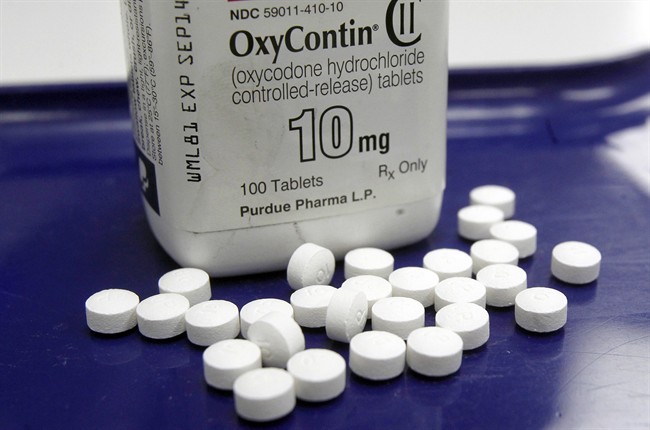WASHINGTON – Overdoses don’t happen just to heroin addicts — patients who legally use strong painkillers called opioids are at risk in the nation’s epidemic, too. A new study says when patients were prescribed an overdose antidote along with those medications, they made fewer painkiller-related visits to the emergency room.

Hospitals and first responders have long used the antidote naloxone to revive people who’ve stopped breathing because of an opioid overdose. Increasingly, take-home doses also are given to friends or family of people struggling with substance abuse to keep on hand in case of emergency.
Monday’s study went a step further — to see if the take-home antidote idea also could work for patients with chronic pain who may not realize they could accidentally get into trouble with prescription painkillers such as Oxycontin, Vicodin and others.
READ MORE: Opioid overdose antidote may be available prescription-free by spring
“Patients don’t see themselves at risk for overdose,” said lead researcher Dr. Phillip Coffin of the San Francisco Department of Public Health. “We’re prescribing naloxone for risky drugs, not risky patients.”
The Centers for Disease Control and Prevention says between 1999 and 2014, more than 165,000 people in the U.S. died of overdoses related to opioid pain medications. Taking too much, either deliberately or accidentally, isn’t the only worry. Other illnesses and medications sometimes can make a usually tolerated opioid dose risky.
San Francisco already had seen a drop in heroin deaths from targeted naloxone distribution. On the prescription painkiller side, Coffin’s team told six primary care clinics run by the health department to add a naloxone prescription for all patients with chronic pain who were taking long-term opioids for relief. The clinics serve publicly insured or uninsured patients. To help ensure they listened, providers were urged to say the antidote was for “bad reactions” to painkillers rather than using the word “overdose.”
- Canadian man dies during Texas Ironman event. His widow wants answers as to why
- ‘Sciatica was gone’: hospital performs robot-assisted spinal surgery in Canadian first
- Canadians more likely to eat food past best-before date. What are the risks?
- Treatment from female doctors leads to lower death rates, study finds
READ MORE: Opioids killing more Ontarians than ever, coroner’s numbers show
About 38 per cent of the 1,985 eligible patients received a prescription for the antidote and were taught to use it, researchers reported in Annals of Internal Medicine. Patients were more likely to receive naloxone if they used a particularly high dose of opioids or had a prior painkiller-related ER visit — such as for overdoses or sedation-caused falls.
Over the next year, patients prescribed just-in-case naloxone had 47 per cent fewer painkiller-related ER visits as their counterparts who didn’t get that prescription, Coffin found.
The study doesn’t prove naloxone helped, and there were too few deaths to know if the approach could save lives. Two of the five opioid-related deaths were among patients prescribed naloxone. A survey found 5 per cent of the naloxone recipients had an overdose reversed when they took the antidote that had been prescribed, Coffin said.
READ MORE: Opioid deaths up despite Ontario’s one-drug crackdown
But he said it’s possible the shock effect of being given an antidote to your medication makes people heed side effects and take better steps to avoid them: “Instead of safety messaging going in one ear and out the other, it really stuck.”
New CDC guidelines say doctors can consider co-prescribing naloxone with painkillers for patients deemed at high risk.
Monday’s study suggests the antidote approach is feasible for primary care providers, and “the results are encouraging,” Boston University addiction specialists Alexander Walley and Traci Green wrote in an accompanying editorial. They weren’t involved in the research.
“It provides a practical starting point for future, broader implementation efforts,” they concluded.
The drug can cost $80 or more, but Coffin said it often is covered by public insurance programs and is far cheaper than an ER visit.



Comments